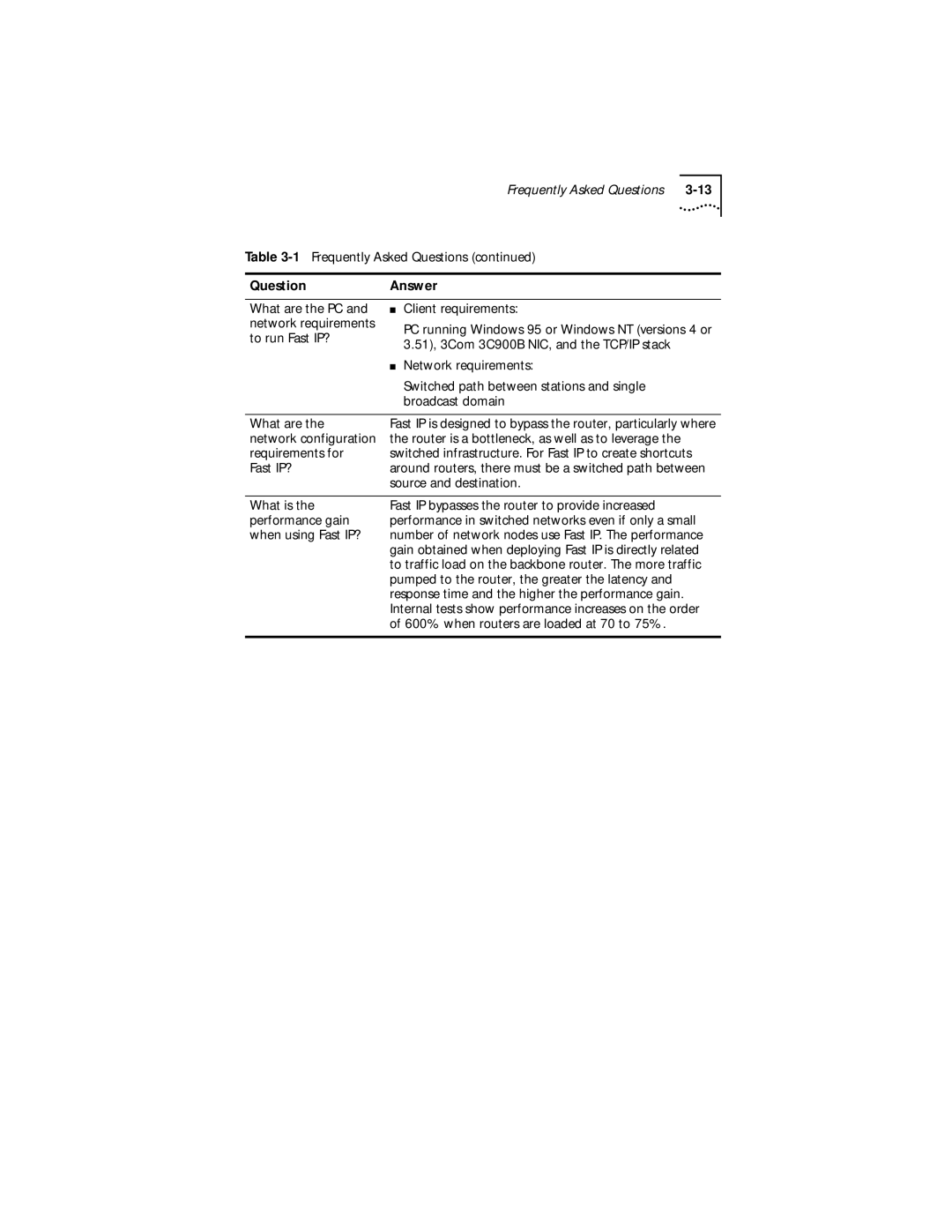
|
| Frequently Asked Questions | |
Table |
| ||
|
|
| |
Question | Answer |
| |
|
|
|
|
What are the PC and | ■ | Client requirements: |
|
network requirements |
| PC running Windows 95 or Windows NT (versions 4 or | |
to run Fast IP? |
| ||
| 3.51), 3Com 3C900B NIC, and the TCP/IP stack |
| |
|
|
| |
| ■ | Network requirements: |
|
|
| Switched path between stations and single |
|
|
| broadcast domain |
|
|
| ||
What are the | Fast IP is designed to bypass the router, particularly where | ||
network configuration | the router is a bottleneck, as well as to leverage the |
| |
requirements for | switched infrastructure. For Fast IP to create shortcuts | ||
Fast IP? | around routers, there must be a switched path between | ||
| source and destination. |
| |
What is the performance gain when using Fast IP?
Fast IP bypasses the router to provide increased performance in switched networks even if only a small number of network nodes use Fast IP. The performance gain obtained when deploying Fast IP is directly related to traffic load on the backbone router. The more traffic pumped to the router, the greater the latency and response time and the higher the performance gain. Internal tests show performance increases on the order of 600% when routers are loaded at 70 to 75%.
